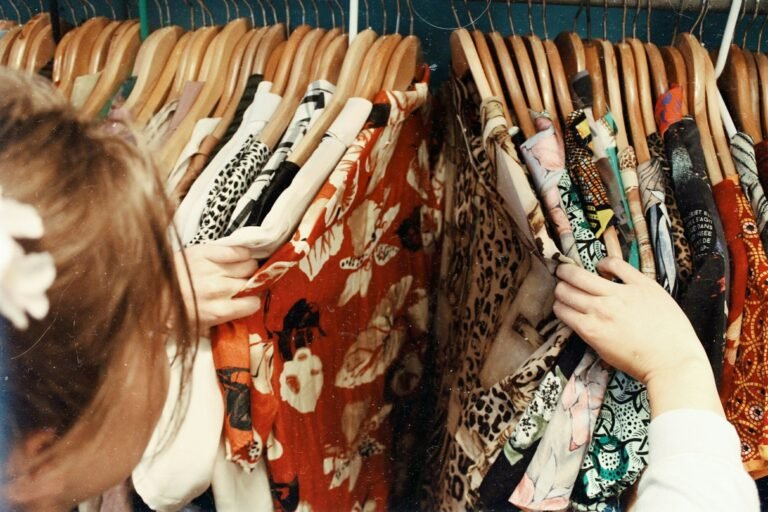Fashion is a dynamic and ever-changing industry, with new trends emerging every season. From runway shows to street style, the fashion world is constantly evolving, leaving many to wonder: Why do fashion trends change so frequently? The answer lies in a combination of cultural, economic, and psychological factors that drive the industry forward. Let’s explore the reasons behind the seasonal shifts in fashion and how they impact our wardrobes.
The Fashion Calendar: A Built-In Cycle
The fashion industry operates on a strict seasonal calendar, with designers and brands releasing new collections multiple times a year. This cycle includes:
- Spring/Summer: Light fabrics, bright colors, and breezy silhouettes.
- Fall/Winter: Cozy knits, darker tones, and layered looks.
- Pre-Fall and Resort: Transitional collections that bridge the gap between seasons.
This structured timeline ensures that there’s always something new to look forward to, keeping consumers engaged and eager to update their wardrobes.
Cultural and Social Influence
Fashion is deeply intertwined with culture and society. Trends often reflect the mood, values, and events of the time. For example:
- Political Movements: The rise of gender-neutral clothing reflects a growing push for inclusivity and equality.
- Pop Culture: Celebrities, movies, and music often inspire trends (e.g., the Y2K revival influenced by early 2000s pop stars).
- Global Events: The COVID-19 pandemic, for instance, led to a surge in loungewear and comfortable clothing.
As society evolves, so does fashion, making it a mirror of the times we live in.
Economic Drivers
The fashion industry is a multi-billion-dollar business, and seasonal trends are a key part of its economic model. Here’s how:
- Consumer Demand: People crave novelty and excitement, and brands capitalize on this by offering fresh styles each season.
- Fast Fashion: Brands like Zara and H&M quickly replicate runway trends, making them accessible to the masses at affordable prices.
- Luxury Brands: High-end designers set the tone for each season, creating aspirational pieces that trickle down to mainstream fashion.
By constantly introducing new trends, the industry encourages consumers to keep shopping, driving sales and revenue.
Psychological Factors
Human psychology plays a significant role in the constant evolution of fashion trends. Key factors include:
- The Desire for Novelty: People are naturally drawn to new and exciting things. Seasonal trends satisfy this craving for change.
- Social Identity: Fashion is a way to express individuality and belonging. Adopting the latest trends can help people feel connected to a group or stand out from the crowd.
- The Fear of Missing Out (FOMO): The fear of being left behind or appearing outdated motivates people to stay on top of trends.
Technological Advancements
Technology has revolutionized the fashion industry, making it easier and faster to create and distribute new trends. Key developments include:
- Social Media: Platforms like Instagram and TikTok allow trends to spread rapidly, often going viral overnight.
- E-Commerce: Online shopping makes it easy for consumers to access the latest styles from anywhere in the world.
- Sustainable Innovations: Advances in fabric technology and production methods are driving trends in eco-friendly fashion.
Environmental and Seasonal Changes
Practicality also plays a role in seasonal fashion shifts. Clothing needs to adapt to changing weather conditions, which is why:
- Spring/Summer: Lightweight fabrics, pastel colors, and breathable designs dominate.
- Fall/Winter: Warm materials like wool, darker hues, and layered outfits take center stage.
These changes ensure that fashion remains functional as well as stylish.
The Role of Designers and Influencers
Fashion designers and influencers are the trendsetters who shape what we wear. Their creative visions and personal styles often dictate the direction of each season’s trends. For example:
- Runway Shows: Designers unveil their latest collections at fashion weeks in New York, Paris, Milan, and London, setting the tone for the season.
- Celebrities and Influencers: Their outfits and endorsements can catapult a trend into the mainstream.
The Cycle of Nostalgia
Fashion trends often come back in style, as designers draw inspiration from past decades. This cyclical nature keeps the industry fresh while appealing to consumers’ sense of nostalgia. Recent examples include the resurgence of 90s grunge and early 2000s Y2K fashion.
Conclusion
The constant evolution of fashion trends is a complex interplay of cultural, economic, psychological, and practical factors. From the structured fashion calendar to the influence of social media and the desire for novelty, the industry thrives on change. While it can be overwhelming to keep up with every new trend, fashion’s ever-shifting nature is what makes it exciting and reflective of the world around us. Whether you’re a trendsetter or a classic dresser, there’s no denying the power of fashion to inspire, connect, and transform. So, the next time you update your wardrobe, remember: you’re not just following a trend—you’re participating in a global conversation.

